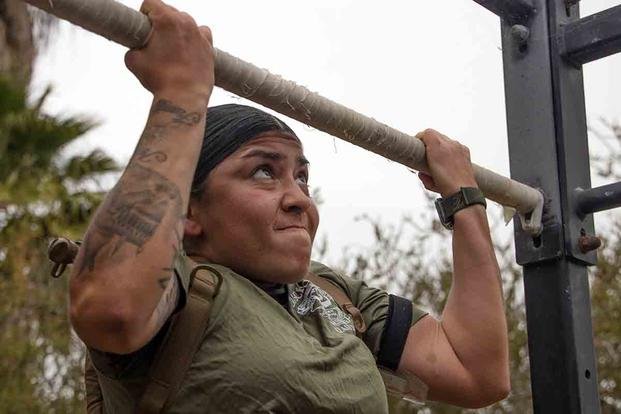At the gym or in the wild, you will see many different ways to grip the pull-up bar. But which is the best way? The only solid answer is: It depends.
A wide variety of grips can make your pull-up workouts more enjoyable and diversify the strain on wrists, elbows, shoulders, joints and muscles. Let's look at a few and discuss why they could work for you.
Grabbing the Bar
Depending on the grip you select and how many pull-ups you plan to do in a workout, you may want to change up how you grab the bar. One of the ongoing debates in the fitness world is where the thumbs go when the bar is grabbed. I call these grips the barbell grip and the mountain climber grip.
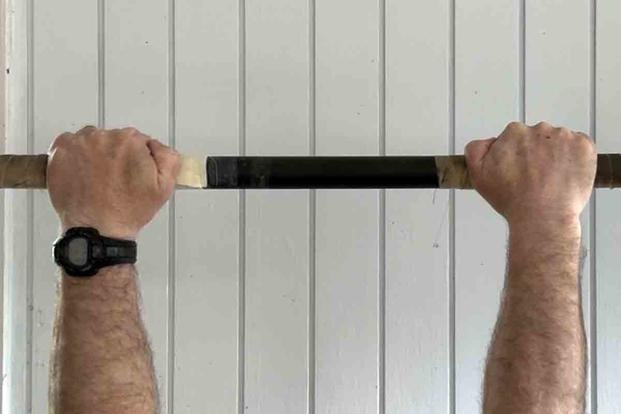
On the barbell grip, your thumbs wrap around the bar to meet your fingertips. On the mountain climber's grip, your thumbs stay against the bar alongside your knuckles. This option of grabbing the bar sparks lively discussions among fitness enthusiasts, highlighting the different approaches in the community. In my opinion, both are correct and work better in different situations.
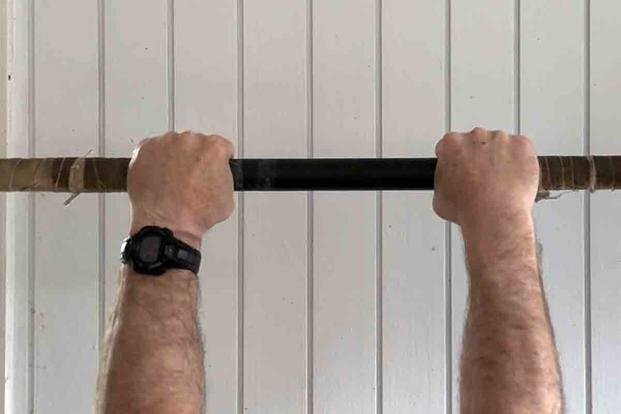
Both methods have a specific purpose. If the goal of the workout is to increase your grip, I recommend that the thumb wraps around the bar. You will feel your forearms working harder in this method while performing multiple pull-ups. If the goal is to do a higher volume than normal pull-ups, you may want to go with the mountain climber grip because it can last longer, especially as total pull-up repetitions get above 100 in a single workout.
Not-So-Common Grips
A grip less common among the public but more so with powerlifters is the hook grip, like the barbell grip from the index and middle fingers wrapped over the thumb. I rarely use this grip to grab the bar unless it hangs long.
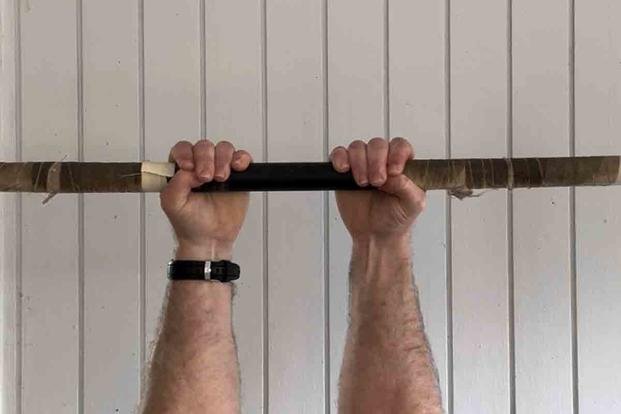
Gymnasts who are the best pull-up athletes use a false grip when hanging on rings and bars, where the wrist is bent forward so the palm is almost parallel to the ground. Certain athletes have used either grip for pull-up tests or long hangs on the bar, but most debate where the thumbs go around the bar.
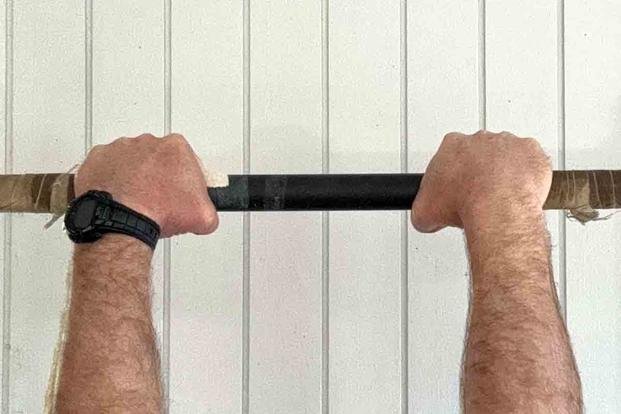
Different Grips for Variety
You can use multiple grips to challenge both the grip and pull-up muscles. Alternate each set with some of these options:
Regular Pull-up
A regular pull-up is when hands are wider than shoulder width and your palms are facing away from your face. This grip is commonly tested in the military. However, some branches also allow for chin-ups (reverse grip). The goal is to get the chin over the bar for the upward movement of the repetition. You can use any method to grab the bar (barbell, mountain climber, hook or false).
The Reverse Pull-up
Also known as the chin--up, the reverse pull-up is when the hands are within shoulder width and palms facing you. This is a better pull-up for developing biceps muscles and is usually the first pull-up achieved for most people.
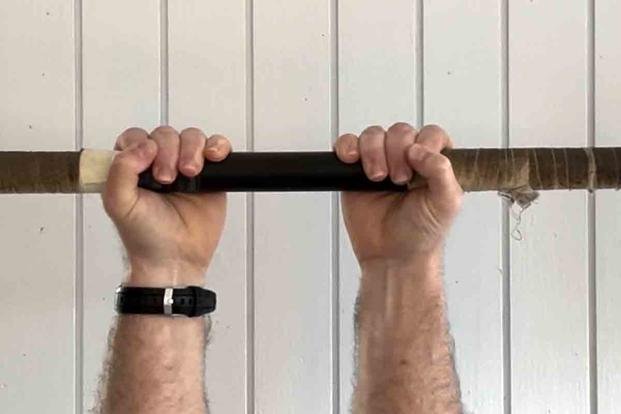
Close Pull-up
The close grip pull-up is performed with both hands touching or within an inch of touching and the palms facing away from the face.
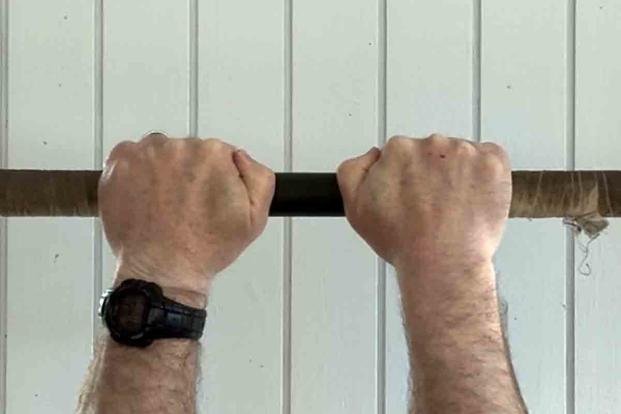
Wide Pull-up
The wide grip pull-up is performed with both hands about six or more inches wider than the shoulders and palms facing away from the face.
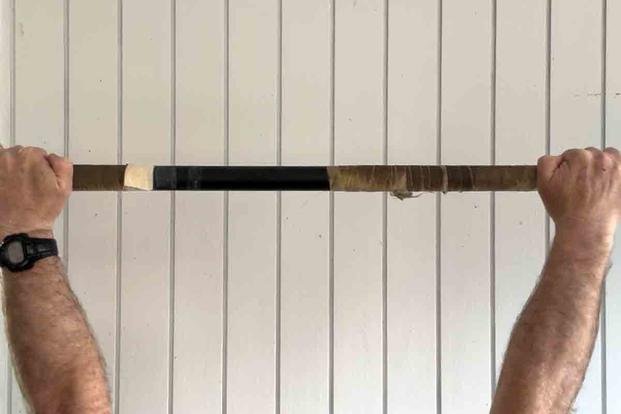
Commando Pull-up
Also known as the alternating grip, this is when one palm faces you and the other faces away from you. On the up movement, you touch the shoulder to the bar rather than facing the bar straight on and getting the chin over the bar.

A classic workout incorporating all the grips is the half pyramid repeated five times, one for each grip. This workout totals 150 pull-ups, but you can adjust to 100 total repetitions by not doing the 10-rep set below:
- Regular Pull-up: 2, 4, 6, 8, 10
- Reverse Pull-up: 2, 4, 6, 8, 10
- Close Pull-up: 2, 4, 6, 8, 10
- Wide Pull-up: 2, 4, 6, 8, 10
- Commando Pull-up: 2, 4, 6, 8, 10
As you can see, this is a 25-set workout. Five sets focus on each grip, totaling 30 repetitions for each grip. It is best to incorporate an active rest exercise between these pull-up sets, such as working on push-ups, sit-ups or a quick one- to two-minute jog between sets. With this type of workout, I recommend the mountain climber grip method as you will need to grip stamina.
A good, challenging workout for both the grip and the pull-up muscles involves anything involving weighted pull-ups. This weight-vest workout below is a good workout that makes the barbell grip very useful for both grip strength and pull-up strength building:
Repeat 3-4 times.
- Weight-vest pull-ups: max (10- to 20-pound weight vest)
- Weight-vest dips: max
- Weight-vest plank pose: 1 minute
- Weight-vest hang: 1 minute. Try to hang on the bar for one minute; take the weight vest off, if necessary.
- Easy cardio for five minutes (jog, bike, elliptical machine, etc.)
Discussions on pull-ups are popular mainly because they are so difficult. The percentages of men and women able to perform one unassisted pull-up are low, as this exercise is the "heavy weightlifting" of the calisthenics world. As a nation that is increasingly getting heavier and heavier every decade, the statistics will likely continue in the negative direction until we get stronger and lose weight (generically speaking). You can do a pull-up, but it takes practice to pull muscles, grip and work toward an ideal body weight for your goals.
Want to Learn More About Military Life?
Whether you're thinking of joining the military, looking for fitness and basic training tips, or keeping up with military life and benefits, Military.com has you covered. Subscribe to Military.com to have military news, updates and resources delivered directly to your inbox.
